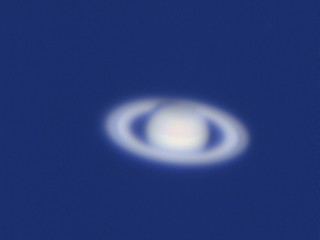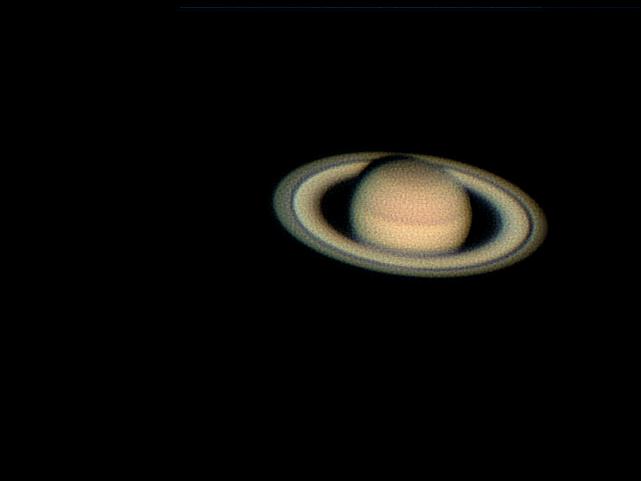
Some of the images in previous lectures were taken through a telescope (and you will see more in the coming weeks). Telescopes are used to make objects both brighter, and bigger. Before we begin our exploration of the more distant reaches of the Universe, we need to take a brief excursion to talk about optics and telescopes. As we noted few weeks ago, Galileo is given most of the credit for being the first to use a telescope for astronomical purposes. But glass lenses have been around since at least 1100 AD, and eyeglasses seem to have been developed in the 13th or 14th century. What good is a telescope? First, let's look at something you are familiar with, your eye:

Your eye has a pupil and a lens.
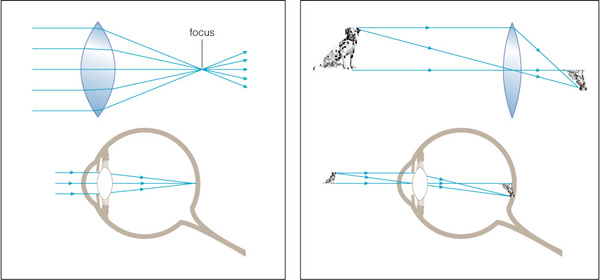
So, how does a lens work? Well, when light encounters the glass (or some other transparent medium), its speed slows down---light travels more slowly in glass then in air, or in empty space. Thus, if light encounters a tilted piece of glass like that shown below:

it is bent. Think of a marching band trying to march in a line and then executing a turn while trying to remain in a line--those on the outside tip of the line have to walk faster while those on the inside edge of the turn are not moving at all. Now picture a marching band that is in a diagonal line formation marching up a football field, but when they get to the 40 yd line they encounter thick mud. The first band members that hit the mud all of a sudden march more slowly, while those in the dry portion of the field keep marching at the same speed until they hit the mud. This causes a slight bending in the line as they go through the mud. So in glass, the bottom portion of the light beam in the figure above hits the glass surface first, slows down first, and this causes a turn in the beam.
In the eye the lens forms the image (upside down!), while the pupil adjusts in size to allow you to let in more light when it is dark, or less light when it is bright. The size of the pupil is what controls how faint of an object you can see. For example, owls have large pupils to allow in more light since they hunt at night. Cats have sensitive eyes, so when it is bright out, their pupil contracts to a very narrow slit (for more on the nature of the human eye, go here.). The size of the lens is the controlling factor for how faint a light source you can see. That's the first important property of telescopes---they "collect light". Looking through a telescope is like replacing your small eye lens with a much bigger lens. The second important property of a telescope is its ability to magnify objects to see finer detail. The amount of detail that you can see depends on the size of your pupil---or the diameter of the lens of a telescope. This is very similar to parallax. The larger the baseline used in a parallax measurement, the smaller angles (finer details) you can measure. The two extreme edges (diameter) of a lens are your "baseline" for creating detailed images. That is why big telescopes are valuable, they collect light, and allow you to magnify an image to see fine detail.
The amount of light a telescope collects depends on its area. For example, the largest dilated human eye pupil has a diameter of about 8 mm. Therefore, it has an area of 50 square mm (π R2!). A one inch telescope, like Galilo had, has an area of (d= 1 inch = 25mm) 490 square mm. Galileo's telescope collected 10X more light than the human eye, allowing him to see stars that were 10X fainter than those visible with the naked eye. The largest telescope (Keck) has a diameter of 10 meters (10,000 mm), it collects 1.5 million times as much light as the human eye. Here is an analogy, a rain bucket:
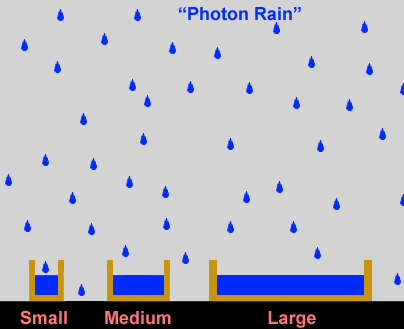
During the late 17th and early 18th century, telescope technology was quickly improving. As with Galileo's primitive telescope, nearly all the instruments of that time were "refractors". Refractors use lenses to bend the light to a focus where an eyepiece (similar to a little microscope) magnifies the image:

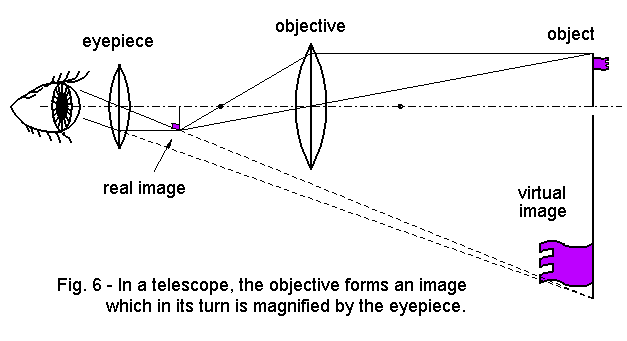
The problem with early refractors was that they used only a single glass lens, and this arrangement could not bring all colors of light to a common focus. Thus, everything you looked at had blue and red images that were not in focus. This is called chromatic abberation:

To counteract chromatic abberation, the first telescopes were made to be very long. Some of these telescopes had small lenses, on the order of 3" in diameter, but were more than 20 feet long (the longest ones approached 75ft)! This made them difficult to use, and discoveries made with them were rather slow in coming. Though, Christiaan Huygens used one of these primitive telescopes to discover Titan, the largest Moon of Saturn, and to figure out the true nature of Saturn's rings (that's why the probe that entered Titan's atmosphere in 2005 was named "Huygens"). Here is his "big" telescope:
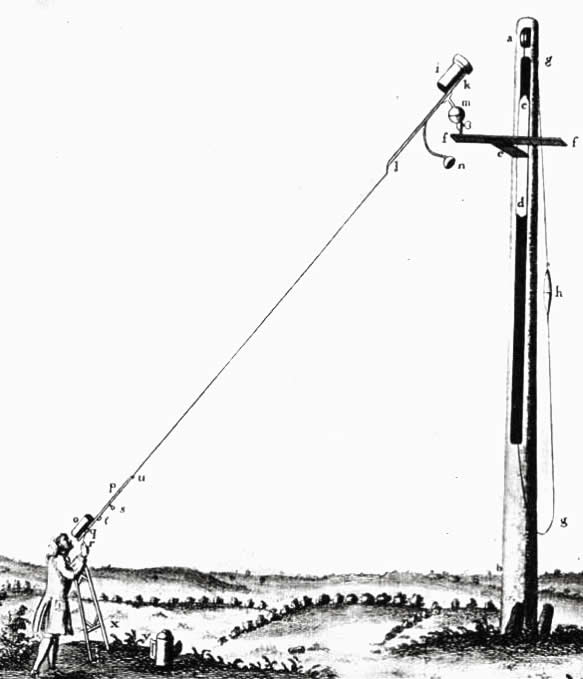
It was discovered later that mixing two (or more) types of glass could counteract the chromatic aberration, and all modern telescopes and camera lenses have more than one lens:

One of the major contributions of Isaac Newton was his book on optics entitled Opticks, published in 1704. One of his proposals was to use a curved mirror to focus light to eliminate chromatic aberration. Newton knew that all light, no matter its color, suffers an identical reflection, thus a telescope using a mirror as its objective would eliminate most of the chromatic abberation suffered by refractors. Using mirrors, telescopes could grow in light gathering ability without becoming too large to manage. One of Newton's designs for such a telescope still bears his name:
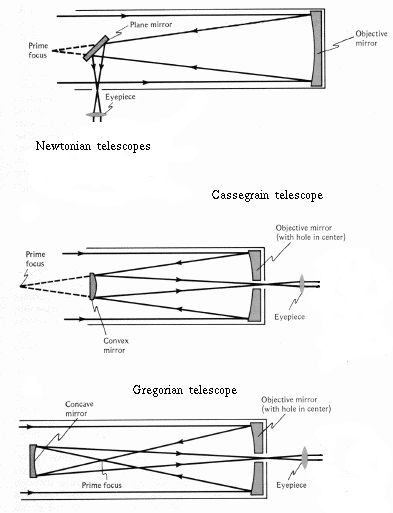
Here is a picture of Newton's telescope:

Besides providing better image quality, telescopes with a single curved mirror were easier to produce than refractors (that have two curved surfaces). Thus, they were cheaper. One of the first people to successfully build and use these types of telescopes was William Herschel (1738 - 1822). A drawing of his largest telescope is shown, below.
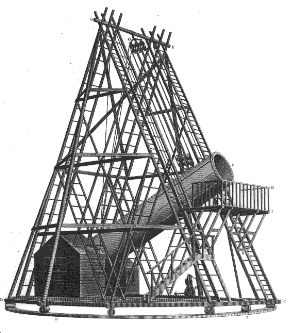
Herschel is best known for his discovery of Uranus in 1782, a discovery that would give him a secure future as "astronomer to the king". Herschel also discovered two Moons of Saturn, as well as two Moons around Uranus. He also observed binary stars, and showed that their orbits followed Newton's laws, and thus these laws appeared to be "universal" (that is, they worked everywhere in the Universe the same way as on Earth). Currently, the world's largest telescopes are the 10 m Keck telescopes:

Because it is extremely difficult to make a single piece of glass that is 10 m across and optically perfect, the Keck mirrors are segemented:
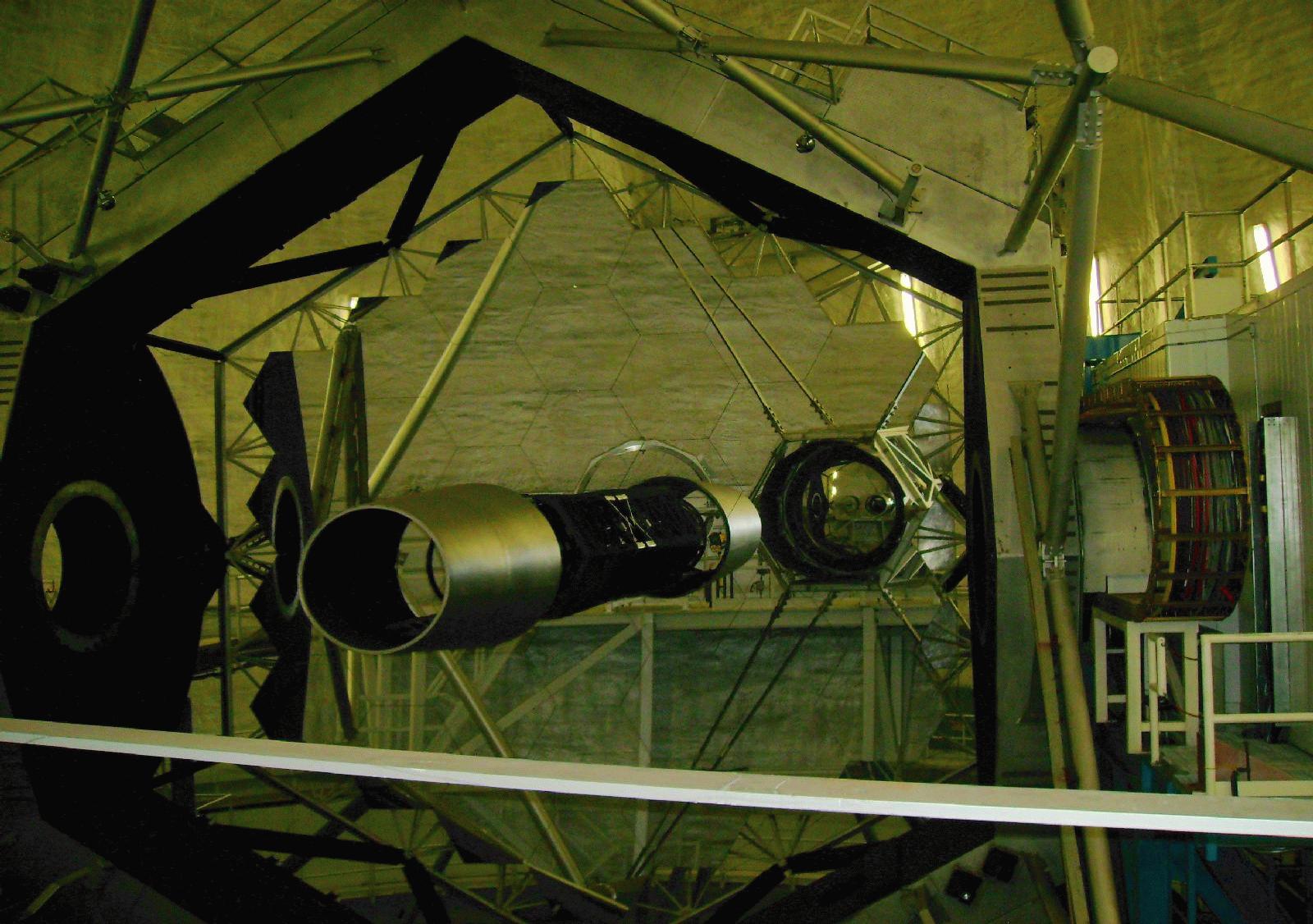
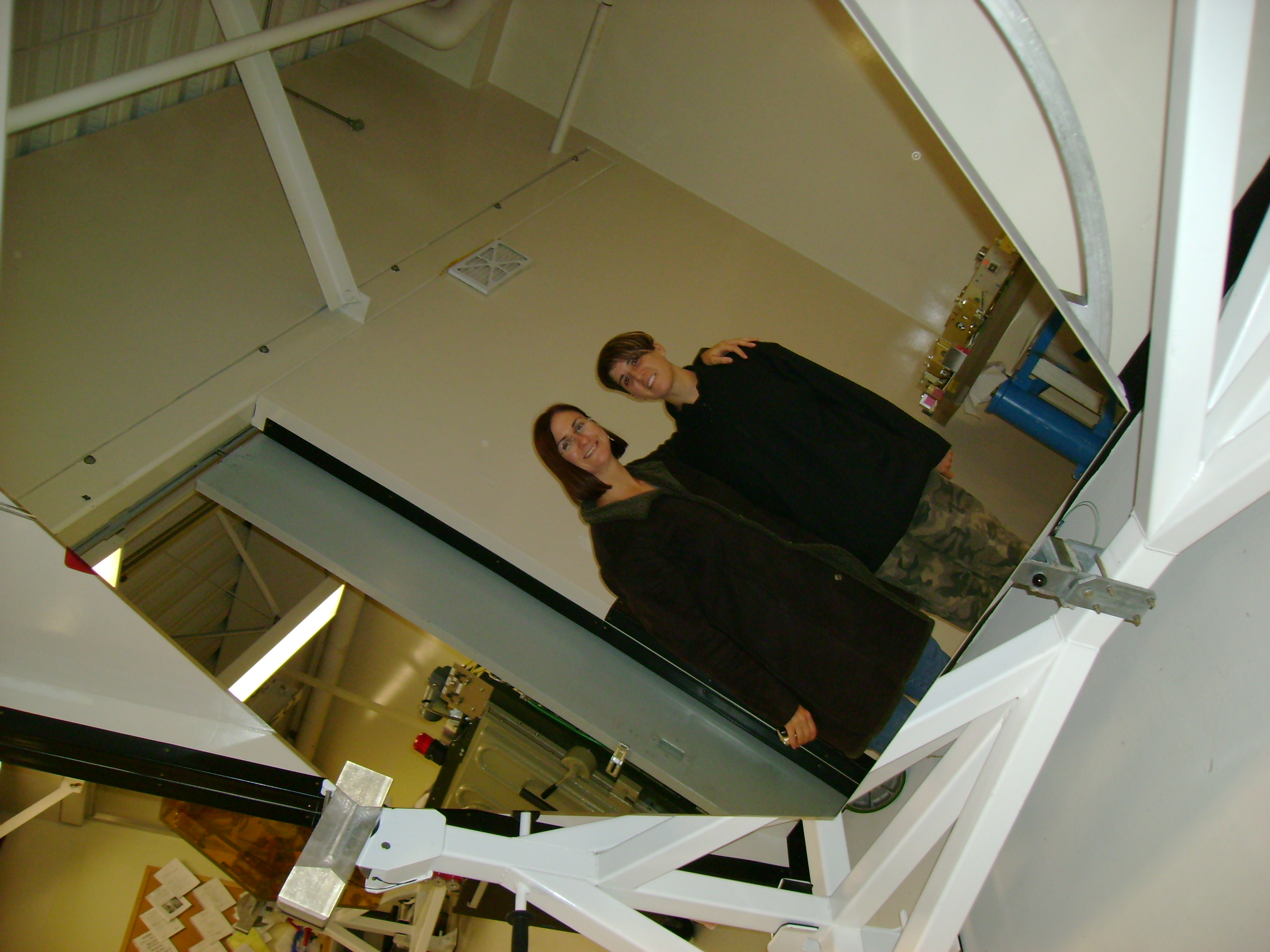
The next generation of mammoth telescopes are being planned, like the "Thirty Meter Telescope":
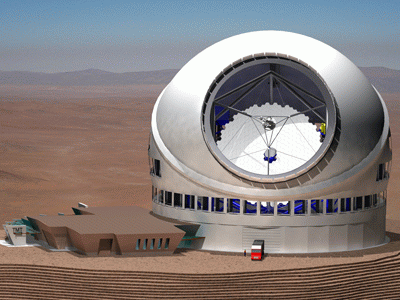
The desire for larger and larger telescopes is due to the need to detect the weak, faint objects found in astronomy. But larger isn't all that we need, going into space allows us to get above the distorting atmosphere. Here is an example:

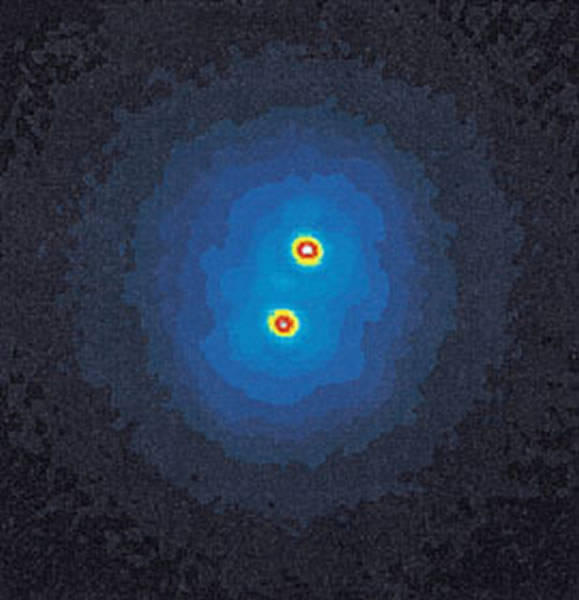
This is why the Hubble Space Telescope was launched:

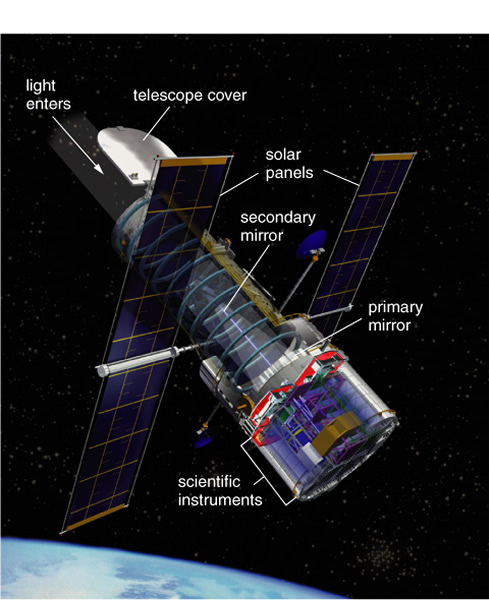
But techniques are being developed to allow ground based telescopes to reduce the affects of our atmosphere ("adaptive optics"), where a flexible mirror is used to improve the image.
Most cartoons you see have astronomers looking into eyepieces and making drawings. But just about all astronomy now uses digital detectors like those used in your digital camera:

The only difference is we use better quality detectors, bigger detectors (>60 "megapixels"), and chill them to extremely cold temperatures to get rid of electronic noise. But even with simple webcams, you can get amazing quality--here is comparison between a typical snapshot, and an image made by processing a short movie of Saturn I made using a webcam at our campus observatory:
